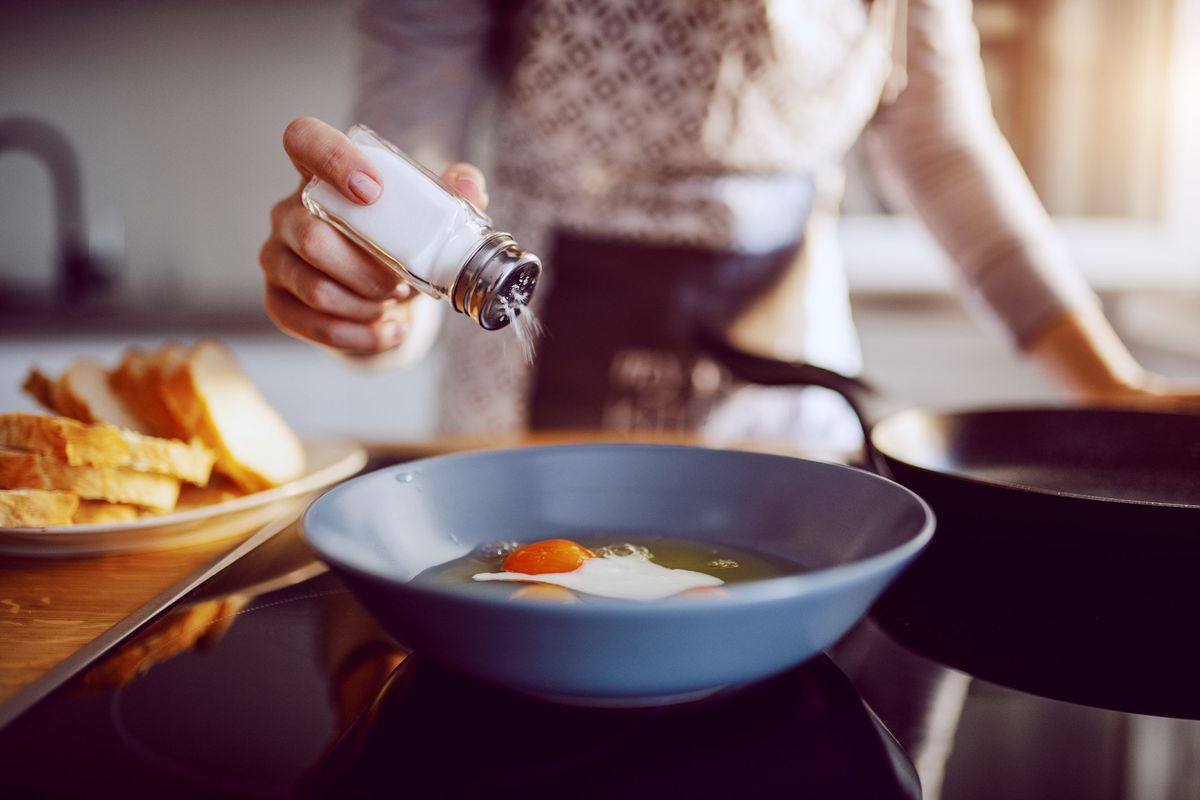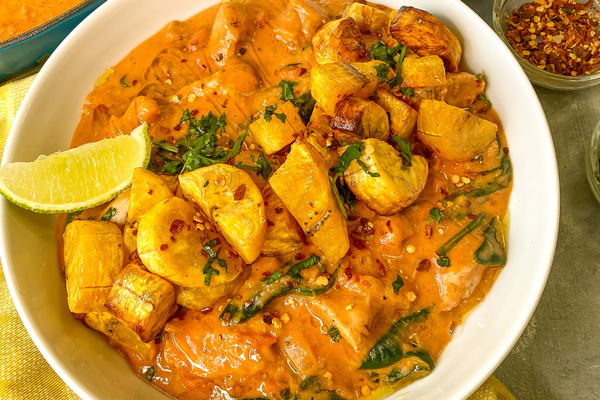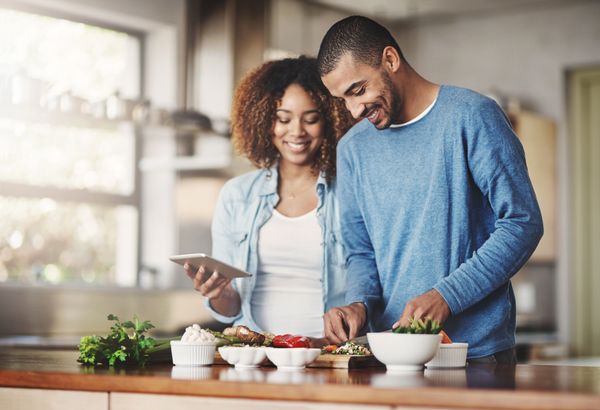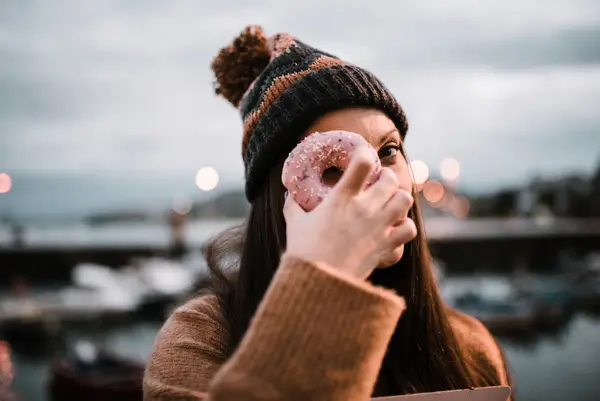Too much sodium can raise your blood pressure and contribute to developing or worsening hypertension (high blood pressure), the leading risk factor for cardiovascular disease. According to a June 2006 report from the American Medical Association (AMA), the higher your blood pressure, the greater your chances of suffering coronary heart disease, stroke, heart failure or kidney disease.
The number of people with hypertension is increasing in the U.S.; 65 million people now have hypertension. Rates are also high in other parts of the world. Although reducing sodium is just one variable in keeping hypertension away, it's an important, medication-free change that can have a significant impact, whether your blood pressure right now is normal or elevated.
A pinch of trouble: How much is too much?
We might avoid using a lot of salt in cooking or at the table and think we're curbing sodium effectively. But a whopping 75 percent or more of our daily sodium comes from processed foods (canned, packaged or frozen items, deli meats, prepared take-home dishes) and meals eaten at restaurants—whether grabbed at the fast food drive-through or enjoyed at a sit-down establishment. "The foods are loaded with salt and you can't tell most of the time," said Stephen Havas, MD, MPH, MS, vice president of Science, Quality and Public Health for the AMA.
As a result of buying convenience foods, eating out more and cooking with traditional ingredients such as salted meats, most U.S. adults are consuming 4,000 to 6,000 mg of sodium each day, said Sonia P. Steele, MPH, RD, LDN, dietitian clinician at the Duke Hypertension Center, Duke University Medical Center.
Depending upon your age and health, that number should be no more than 1200 mg to 2400 mg daily (our bodies only need 500 mg of daily sodium to operate healthfully). If you're older than 50, or are African American (a group at high risk for hypertension), or have high blood pressure, your daily sodium should be 1500 mg or less.
Cutting back gradually is the key, said Ms. Steele. Individuals participating in research at her center notice their taste buds become more sensitive to salt as they lower the amount of sodium they consume. "Things they normally would eat, now they can taste the salt in it," she said. "Once you get away from it, you realize it."
The AMA is serious about the health hazards of sodium. It asked the Food and Drug Administration (FDA) to revoke salt's designation as a "generally recognized as safe" product and establish limits for processed and restaurant foods. The doctors' organization also called on food manufacturers and restaurants to gradually cut the sodium in their foods over the next 10 years to achieve a minimum of a 50 percent sodium reduction. "If you gradually reduce it, nobody will notice," said Dr. Havas.
10 More Tips to Shake the Salt Habit:
- Compare products in the same category. The AMA found wide ranges of sodium content. For example, two tablespoons of salad dressing contain anywhere from 170 mg to 500 mg of sodium; one cup of cream of tomato soup has 340 mg to 950 mg; frozen fried chicken dinners have 900 mg to 2,160 mg.
- Double-check sodium counts on low-fat items. "You have to be careful," said Ms. Steele. To boost low-fat product flavor, many manufacturers "take the fat out and add the sodium."
- Watch for hidden sodium overload in restaurant foods. It might not surprise you that one large slice of supreme pizza has 1,580 mg of sodium, but do you expect 2,400 mg (the total daily maximum for healthy people under 50) in an order of chicken chow mein or 900 mg to 1,450 mg in a "healthy" chicken Caesar salad?
- Learn to translate menu lingo. Dishes with these words in their description are likely to be high in sodium: seasoned, barbecued, blackened, Cajun, breaded, smoked, pickled, marinated. Instead, choose grilled, baked, broiled, boiled, steamed or roasted, and ask the restaurant to prepare your dishes without adding salt.
- Curb condiments. Ketchup, mustard, relish, tartar sauce and similar add-ons increase flavor because they're often loaded with salt. Soy sauce has 1,840 mg to 2,520 mg of sodium in two tablespoons. Use smaller amounts of condiments, choose lower sodium versions or use sliced fresh tomatoes, pepper and herbs instead.
- Put away the salt shaker. "We all know a lot of folks who use the salt shaker before they even taste the food," said Ms. Steele. Each shake equals about 40 mg of sodium. "Some people go shake-shake-shake on each food item," she added. Put flavorful herbs and spices in the shaker instead.
- If you can't eliminate the salt, cut it way down. For recipes that you think must have a little salt, try using half or one-quarter of the amount stated.
- Rinse to reduce. Buy fresh vegetables when available. Frozen is second best, then canned. Many canned vegetables are high in sodium. Look for those labeled "sodium free" or "no salt added." Ms. Steele also recommends putting canned vegetables or beans into a colander and running water on them for a minute. "You'll get rid of 70 percent of the sodium content," she said.
- Read all ingredients. Sodium comes in many forms, not just as table salt, or sodium chloride. There's also sodium benzoate (a preservative), sodium nitrate (found in processed meats), monosodium glutamate (the flavor enhancer known as MSG), as well as sodium in baking powder and baking soda. All add to your total daily sodium intake.
- Look before you drink. Once again, read labels: Diet root beer has 70 mg per 8-ounce serving; diet cola has 30 mg; sports drinks have 110 mg to 200 mg. Sparkling mineral waters, especially those from Europe, have higher sodium content than many natural spring waters. The FDA considers less than 5 mg per 8-ounce serving to be sodium-free. Contact your water supplier or bottled water manufacturer to learn the sodium content of what you're drinking.







